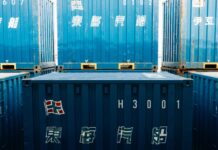
Every year, companies lose a small portion of their agricultural shipments due to them getting spoiled, lost, or damaged due to poor storage. The ensuing losses can be huge, and in addition to immediate financial losses, there is also the probability of lost business connections to consider. Barring exceptional circumstances, loss of agricultural shipments caused by poor storage can be eliminated almost completely though.

Loss Prevention and Proper Storage are Synonymous
First and foremost, understanding the challenges of grain storage holds the key to preventing common mistakes. Some grains and seeds such as wheat, millet, spelt, and rice are quite durable and don’t need special containers to keep them fresh under normal temperatures. Others, like barley, quinoa and rye, on the other hand, do require temperature-controlled containers to prevent them from germinating during long hauls.
Next comes the basic knowledge necessary for determining which container would be appropriate for storing what type of agricultural shipment. The following should provide a decent idea regarding container types, so that the company itself can choose the most ideal options for their respective shipments.
Dry Containers
The dry container is a general-purpose container, suitable for shipping most types of dry goods. Unless they are specially fitted with moisture and temperature controlling equipment, they may not be suitable for long hauling agricultural produce of the perishable kind. They might be used for short hauls while shipping dry grains and seeds, but that too depends on the grains and seeds being shipped.
ISO Reefer Containers
From meat and eggs to fruits and vegetables, ISO-Standard refrigerated containers are certifiably equipped to safely store perishable agricultural produce inside them. The steel containers have built-in cooling features but must be powered by an external energy source. They are moderately expensive to use and maintain, but for cargo that requires the physical protection and cooling, the ISO reefers are quite capable of providing just that.
ISO Insulated Containers
While exporting agricultural produce over long distances, ISO-Standard insulated containers are among the best options available to farming businesses. The containers are completely insulated from external weather conditions and come with in-built cooling, heating, humidifying and dehumidifying features. The extreme reliability of these storage units has also made them ideal for transporting medication, sensitive chemicals, blood, organs, and other delicate types of important, biological cargo.
Half-Height Shipping Containers
Finally, there are the half-height containers which most businesses that deal in grain and seeds prefer. The preference is understandable because these are designed with a low center of gravity to house dense, heavy cargo inside. The half-height build, on the other hand, makes these easy to use for both loading and unloading seeds, grains, coal, gravel, stone chips and the like. For long hauling weather sensitive grains and seeds, they can be fitted with weather control features as well.
High freight rates can become a real problem for companies because providing quality storage and shipment is certainly not cheap. Then again, with so much competition out there, the shipping rates are not non-negotiable.





